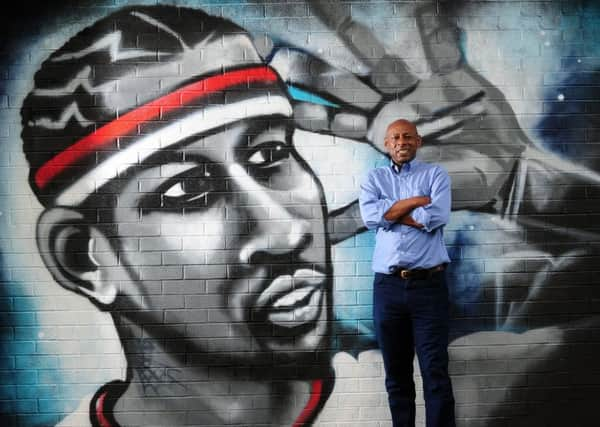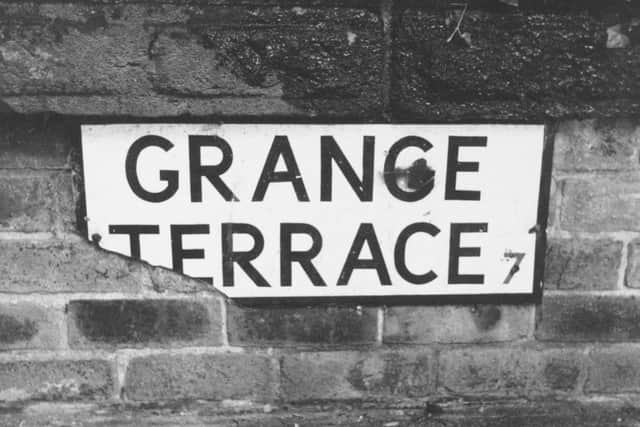Chapeltown: A Leeds suburb battling to overcome its troubled past


Walking down Chapeltown Road you get a sense of a thriving community. Cafes, hair salons and fabric shops are punctuated by newly built flats and the imposing villas that at one time made this inner-city suburb the place to live in Leeds.
Outside the £12m Reginald Centre there’s a tennis table and giant chess board where locals can make the most of the recent warm weather. The one-stop centre is home to council and NHS health services as well as a library and was lauded by local politicians and community leaders when it opened seven years ago.
Advertisement
Hide AdAdvertisement
Hide AdIt was built on the site of the Hayfield Hotel, once dubbed ‘the most notorious pub in Britain’, and was heralded as a tangible symbol of a community finding its feet again after a period of turmoil.


Chapeltown certainly has a chequered past and this week marks 30 years since rioting erupted on the streets. Reports at the time said that gangs of youths clashed with police after a man was arrested, with shop windows smashed and cars petrol bombed.
There has been trouble here before. Rioting erupted in Chapeltown in 1975 and again in 1981. By the turn of the Millennium, Chapeltown had become the scene of an escalating turf war between rival gangs who were embroiled in a deadly world of drug smuggling and drive-by-shootings.
Police chiefs responded with a series of high-profile operations that stamped out the gang warfare and led to a series of high-profile convictions, but the public perception of Chapeltown was left badly tarnished.
Advertisement
Hide AdAdvertisement
Hide AdOver the past 30 years ago Leeds City Council has attempted to address the social problems that have blighted the area. It helped establish the Chapeltown Business Centre, using buildings left vacant after the riot, as well as the Reginald Centre development.


Since 1995, the council has provided grants and run schemes worth £1.7m, that have helped improve security, create jobs and revitalise the appearance of local shops.
Claude Hendrickson has lived here all his life. As a 15 year-old boy he got caught up in the disturbances in 1975 and spent eight months in jail. He returned to Chapeltown and is a pivotal figure in the community, earning praise for his work.
In 1992 he set up Chapeltown Young People’s Club and now runs a local health project supporting men in the BME community. He says the area’s appearance has improved since the riots in 1987. “It has come on. There has been a lot of investment during that time in infrastructure. People used to say Chapeltown was an eyesore and we’ve got rid of that. There aren’t any derelict shops, but it’s taken 30 years.
Advertisement
Hide AdAdvertisement
Hide Ad“Most people drive along Chapeltown Road and think it’s quite pleasant and that everything must be sorted, but that’s not true. You walk in the streets behind the shops and there are still issues.”
Hendrickson says austerity is having a damaging effect on Chapeltown. “The austerity cuts over the past five or six years are having a devastating impact on the community and community spirit. A lot of the projects that did outreach work have gone. They’ve lost that core bit of funding and a lot of the services being cut are grassroots projects which is why people are feeling disenfranchised and disheartened.”
Chapeltown has historically been a magnet for immigrant populations and is home to popular and long established businesses like Dutch Pot and Independent Woman. These have been joined by new start ups, like Cafe Bliss and Mayan’s Fusion, but if you speak to local shop owners and would-be entrepreneurs they say there needs to be more outside investment in the area.
Hendrickson would like to see more money invested in local people rather than just bricks and mortar. “We want to train people up and empower the next generation so that what happened in the past doesn’t happen again.
Advertisement
Hide AdAdvertisement
Hide Ad“We need investment in the people here, not the infrastructure. If people have better jobs they’ll spend more money locally which then goes back into the community, but that’s not happening.”
He points to successful projects like the Chapeltown Youth and Development Centre, RJC Dance and the Black Health Initiative, but says they can only do so much with the resources they have.
His concern is that 30 years after rioting brought anger and violence to the streets, the ingredients for disruption in the future are still there. “We’re not inspiring young people. It’s not happening nationally and it’s not happening in communities like Chapeltown. If you don’t find things for young people to do, young people will find things to do that parents don’t like. I worry with the summer holidays coming because there’s nowt for young people to do,” he says.
Despite this, the community spirit in Chapeltown endures. It was born out of a DIY attitude and later this summer it will be in the spotlight as the Leeds West Indian Carnival celebrates its 50th anniversary, with visitors expected to make a beeline for north Leeds from all around the world.
Advertisement
Hide AdAdvertisement
Hide AdIt says something about the place and the people. “Chapeltown is the spice of Leeds. There is a vibrancy here. There’s food shops, hairdressers, cooking and music, it’s all here. We bring that to the city.
Chapeltown was once the most exclusive part of the city.
At the turn of the 19th Century new villas had helped turn it into the ‘Bloomsbury of Leeds.’
Potternewton Park was once part of a stunning 200-acre estate before it was sold in 1877 to Leeds Council and became Potternewton Park.
Chapeltown was a magnet for immigrant Jewish, Irish and Afro-Caribbean and families during the last half of the 20th century, but suffered from the movement of industry in the city.